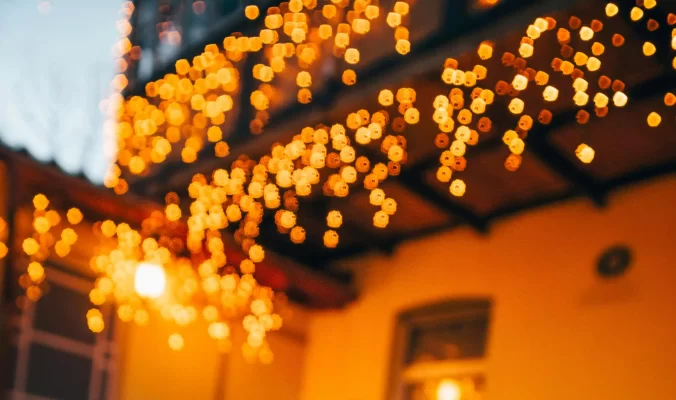BLOG
What is the Best Color for Outdoor Lights?

Outdoor lighting plays a crucial role in enhancing the beauty, security, and functionality of your garden or outdoor space. Choosing the right color for your outdoor lights can significantly impact the ambiance and effectiveness of your lighting. In this article, we will explore the best colors for outdoor lights, supported by research, examples, and expert opinions.
Understanding Outdoor Light Colors
When we talk about the color of light, we are referring to the color temperature, measured in Kelvin (K). Different color temperatures can create different atmospheres and serve various purposes in outdoor settings.
Warm White (2700K-3000K)
Warm white light, ranging from 2700K to 3000K, emits a soft, yellowish glow. This color is often associated with cozy and inviting atmospheres, making it ideal for creating a welcoming environment in your garden.
Cool White (4000K-5000K)
Cool white light, ranging from 4000K to 5000K, emits a bright, white light that is closer to daylight. This color is excellent for enhancing visibility and security, making it a popular choice for outdoor security lighting.
Daylight (5000K-6500K)
Daylight color temperature ranges from 5000K to 6500K, providing a bluish-white light. This color is perfect for task lighting and areas where you need high visibility and clarity.
Best Colors for Specific Outdoor Lighting Applications
Porch Lights
For porch lights, warm white (2700K-3000K) is typically the best choice. It creates a welcoming and cozy atmosphere, perfect for greeting guests and providing a relaxing ambiance.
Garden Pathways
Warm white or cool white (3000K-4000K) lights are ideal for illuminating garden pathways. These colors provide enough brightness to ensure safety while adding an aesthetic touch to your garden.
Security Lighting
For security lighting, cool white (4000K-5000K) is recommended. This color temperature offers high visibility, deterring potential intruders and ensuring safety around your property.
Flood Lights
Flood lights should use cool white (4000K-5000K) or daylight (5000K-6500K) colors. These colors provide the brightest illumination, ideal for covering large areas and enhancing security.
Factors to Consider When Choosing Outdoor Light Colors
- Purpose: Determine whether the primary goal is aesthetics, security, or functionality.
- Environment: Consider the surrounding environment and how the light color will interact with it.
- Personal Preference: Your personal taste and the overall design of your outdoor space are crucial factors.
Case Studies and Examples
Let’s look at some real-world examples to understand the impact of different light colors:
Example 1: Warm White for Cozy Garden Settings
A garden in a suburban home used warm white lights (2700K) to create a cozy and inviting atmosphere. The soft yellow glow complemented the greenery and created a relaxing space for evening gatherings.
Example 2: Cool White for Enhanced Security
An urban residence opted for cool white lights (4000K) for their security lighting. The bright white light provided excellent visibility, making the property more secure and deterring potential intruders.
FAQs
Should outdoor lights be yellow or white?
It depends on the purpose. Yellowish (warm white) lights are great for creating a cozy atmosphere, while white (cool white) lights are better for visibility and security.
Is soft white or daylight better for the outside?
Soft white is better for ambiance and comfort, whereas daylight is better for task lighting and security purposes.
What is the best color of light to use?
The best color depends on the application. Warm white for ambiance, cool white for security, and daylight for high visibility tasks.
What is the best LED color for sunlight?
Daylight LEDs (5000K-6500K) mimic natural sunlight and are ideal for outdoor areas where you need high visibility.
What is the best LED color for outdoor lighting?
Cool white (4000K-5000K) is generally the best choice for outdoor lighting due to its balance between brightness and visibility.
What is the best color to reflect sunlight?
Light colors such as white or light grey reflect sunlight best, reducing heat absorption and keeping spaces cooler.
Conclusion
Choosing the right color for your outdoor lights is essential for achieving the desired ambiance, functionality, and security. Warm white lights are perfect for creating a cozy atmosphere, cool white lights enhance visibility and security, and daylight colors are ideal for task-oriented lighting. Consider the specific needs of your outdoor space and personal preferences when selecting the best color for your outdoor lights.


